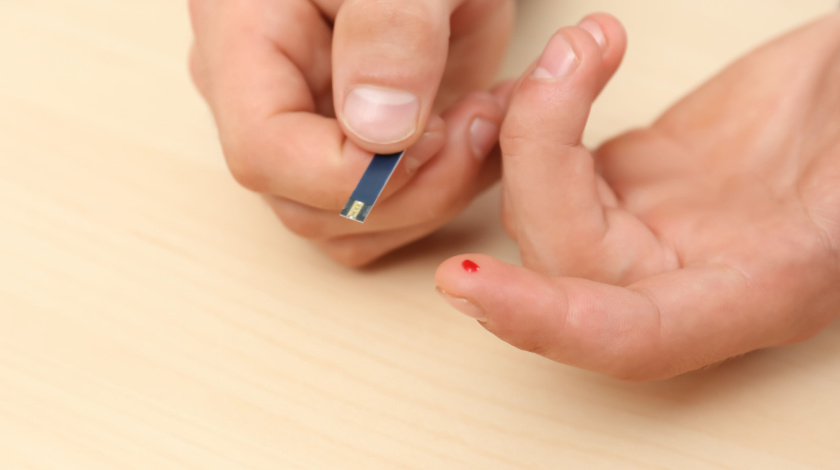Getting diagnosed with diabetes literally redefines life. Most of the affected individuals belong to the adult category. Even so, diabetes doesn’t spare kids and teens either. However, its medical implications are not fully understood by young, newly diagnosed, and parents of kids with diabetes. The good news is that glucometer has made monitoring and management of diabetes in kids and teens hassle-free.

Symptoms parents need to look out for –
As a parent, you must catch this ailment as early as possible. If your child exhibits even one of the following symptoms, make sure you consult your doctor immediately.
- Frequent urge to pee.
- Bedwetting (abrupt change).
- Releasing more urine than normal (Babies).
- Frequent demand for water (thirstiness).
- Fatigue, anger and disinterest.
The Importance of Age-Appropriate Education
Diagnosing diabetes in kids and teens can be challenging because they are in a state of perpetual change, physically and mentally. In such a scenario, age-appropriate education becomes the only tool for a parent. Talk to your dear one/s. Inform them about the existence of this ailment. Educate them about its symptoms. In the unfortunate event of your kid or teen who has diabetes, you need to provide support and instructions in terms of “glucometer use”. You also need to talk about the frequency and the time these tests must be initiated.
Introducing the Concept of Blood Glucose Monitoring
Remember, if your ward is diagnosed with diabetes, you invariably become a part of this fight. As a parent, your first step will be introducing the self-monitoring blood sugar device. While teens pick up monitoring instructions quickly due to the influence of technology, kids can have a tough time understanding the reason or the need to accomplish such a task. However, you need to be persistent. As a parent, you also need to discuss foods that can cause spikes. You can exploit self-help videos to explain this illness and how to cope up in the most compassionate manner.
Creating a Comfortable and Supportive Environment
Regular intervention and compassion are essential … even in the case of young adults. On the other hand, kids will look up to you for everything: from emotional support to advice, from device/insulin shot usage to some of the changes that they experience on a daily basis because of diabetes. As a caretaker or a family member, make sure you are always accessible and ready to provide answers and comfort. A supportive environment will not only allow your kid to adapt to the new changes quickly but also feel less overwhelmed by glucometer machines.
Choosing the Right Glucometer for Children and Teens
Type-1 diabetes is synonymous with children and therefore called juvenile diabetes. It is insulin-dependent and demands frequent blood sugar monitoring at times a dozen times a day. Blood sugar measuring devices are typically available in two variants –
- The standard glucometer which uses a test strip and blood sample.
- CGM or continuous glucose monitoring system where a sensor is pushed into the subcutaneous tissue via skin puncture.
The right device will depend on the recommendation of your doctor/diabetes educator.
Step-by-Step Guide to Using a Glucometer Safely
Modern glucometers are easy to operate and seldom fail. However, as a parent or peer, you should educate your child about the device, its usage, the steps involved, and the interpretation of readings. Make it a fun lecture. Motivate your child. Offer rewards if your child achieves the targeted goals. This will not only reduce stress but increase the child’s awareness and interest. Remember, the glucometer price is irrelevant. Opt for the one that is child-friendly.
Has your little one been diagnosed with diabetes recently? Need instruction on device usage? Here are the typical steps –
- Remove a fresh test strip from the box with clean hands.
- Insert this strip into the device.
- Using a lancet makes a small puncture on your child’s index finger.
- Transfer a drop of blood to the other end of the strip.
- Activate the device to fetch the reading.
Understanding Blood Sugar Readings and What They Mean
Children and teens with diabetes (typically type-1) will rarely reflect normal values, which fall between 70 and 100 mg/dL (fasting) and <140 mg/dL (post-meal). Instead, your child’s diabetes educator may set targeted goals and also create a diet/workout plan to minimise fluctuations in diabetes values. As a parent, you may face upheavals once in a while, but remember, these are temporary setbacks. Your doctor/dietician will take dosages and diet so that your little one maintains a healthy range.
Read More: Personal Stories – How Glucometers Have Transformed Lives
Handling Glucometer Supplies and Waste Responsibly
At the very outset, you also need to educate your kid/teen on the importance of safe disposal of used diabetes tools such as syringes, lancets, test strips, cotton swabs, unused/expired medicines, insulin pumps, worn-out glucometer, and plastic containers. This will prevent infection/s in garbage collectors and also help local authorities destroy or recycle these remnants safely and efficiently.
Looking for a single point of access for diabetes-related products? Visit BeatO, a start-up dedicated to this emotionally draining and demanding illness.
Disclaimer:The content of this article is compiled information from generic and public sources. It is in no way a substitute, suggestion, or advice for a qualified medical opinion. Always consult a specialist or your own doctor for more information. BeatoApp does not claim responsibility for this information .
Dr. Navneet Agarwal is an established and highly skilled Diabetology with over 25 years of experience in Diabetology & Obesity. He is well-regarded for his quality and patient-centered diabetes care. Also, keep track of your blood sugar levels with a Doctors’ approved smart glucometer and elevate your healthcare routine.




